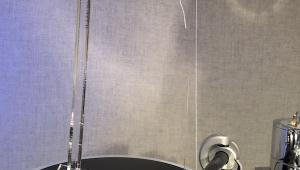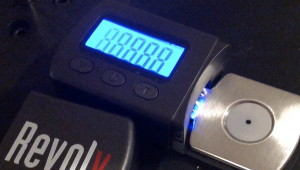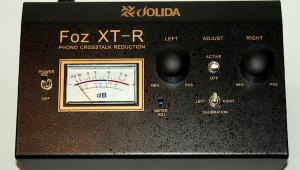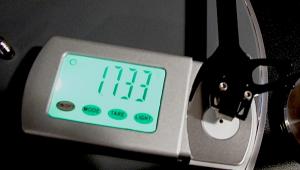A Useful Overhang Gauge With Some "Ifs" Attached

One time someone asked what parameters were important for setting up a spherical stylus cartridge. I quite rightly answered "All you need concern yourself with is overhang, anti-skating and stylus pressure." The response was immediate: "How arrogant of you!" That was followed by the upset individual explaining that a friend's defective spherical stylus cartridge required more.
So yes, I'm finished "contributing" to Facebook. And in case you've never thought about it, consider that the spherical stylus is like a ball: no matter how you orient the "ball" neither the SRA nor the zenith angle change. This is one reason people like spherical stylus cartridges: it's almost impossible to screw up the installation. It's also almost impossible to get out of the groove all of the information the chisel-shaped cutting stylus inscribed into the groove!
So for those unsure, "overhang" literally refers to the distance from the center of the spindle to stylus tip as specified by the tone arm manufacturer. The pivot-to-spindle distance is the arm's actual length. Add the "overhang" and you get the arm's effective length. The reasons for producing a pivoted arm's arc beyond the spindle were defined by The Gramophone Magazine's Percy Wilson in the first half of the 20th century and can be skipped for the purposes of this discussion.
The only reason there are head shell slots in the first place is because no standard exists that defines the distance from the cartridge fixing screws to the stylus tip, so head shell slots allow for a wide variety of cartridges to be properly set up for "overhang".
Acoustand Audio in the U.K. has created a fairly easy to use "Overhang Gauge", model OHG-02. While the instructions claim "the Acoustand Overhang Gauge is all the tool you should ever need to get the job done within minutes", that is only true if your pivot to spindle distance is 100% accurate, since the gauge depends upon that accuracy to accurately do its job. If you measure and find it off by a few millimeters one way or the other, you can compensate on the gauge by adding or subtracting from the specified overhang.
So, if your turntable has a factory mounted arm (ie: Rega, Pro-Ject, VPI, etc.) you can be fairly certain the P2S distance is correct. The other issue you might face is does your arm's lateral travel allow it to extend directly over the spindle, which is a pre-requisite for using the Acoustand Overhang Gauge.
Assuming it does, using the device couldn't be easier, though the photos in the instruction manual are awful, especially if you are new at this! It may seem self-evident to the manufacturer that one needs to slide the ruler-like part of the gauge through the sliding pointer part, but it wasn't at first to me. Once you've assembled the device, you place it on the spindle, rotate the arm over directly over the spindle and lower the stylus onto the sliding part of the device. Your tonearm manufacturer should supply both the effective length and the actual length. Set the slider so its horizontal line matches the correct "overhang" specification (in millimeters) and then once you have the gauge in a straight line with the arm pivot, you turn the knurled screw to tighten the gauge onto the spindle. You can use the supplied "wedge" to disable platter rotation (if the distance between it and the plinth is within the wedge's range).
If the stylus tip does not land on the stylus tip circle, loosen the cartridge mounting screws and adjust until it does, then tighten the screws and if your stylus is spherical (and not defective), you are done! Otherwise you will need a protractor to adjust zenith angle.
If you have a two grid type paper alignment gauge where you have to go back and forth numerous times to set overhang, you'll find this gauge a real time saver, after which you can use that gauge to confirm zenith angle.
The Acoustand Audio Overhang Gauge is available in The United States for $85 from Robyatt Audio and in the U.K. from Acoustand Audio where you'll also find far better photos than are supplied with the gauge itself!










































